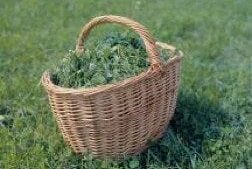Mixed genetics equals better armory towards pests. When we combine varieties and species with different skills and strengths it helps us designing products with better performance under different biotic and abiotic conditions. That’s one of the reasons why seed mixtures are getting more widely used in pastures, sports pitches and home gardens.
In seed business the turf and forage grass industry have quite unique opportunities when it comes to disease control. We frequently create variety mixtures to serve different specific purposes. In doing so we not only address specific requirements but we also increase disease resistance in our end-products (intentionally or unintentionally). This positive secondary effect is a privilege, which can only be envied by cereal breeders, which usually face rapid brake-down of new resistance genes due to the narrow composition of inbreed lines.
The most common purpose of a turf grass mixture is to provide a nice-looking sward all year-around. Part of this good-looking is also the ability of included species/varieties to keep growing when some of their peers are suffering from pathogen attack. For sport, we provide turf grass mixtures, which comprise high wear tolerance, fast recovery, and different types of disease resistance. In forages we test and provide mixtures that will ensure high yields and good, steady quality throughout the season. In essence, designing mixtures is designing specific solutions with a built-in durability.
Some groups are nicknaming lawns and pastures as “green desserts” of monoculture, but that is in fact very far from reality. Several species and varieties actively work together to offer a pasture with a fulfilling meal for livestock or a pleasant playing surface for sport and leisure.
The relatively low-tech idea behind seed mixtures is based on the same concept of herd resistance in common child vaccination programs. By introducing tolerant or even resistant varieties in the population (non-hosts of the pathogen), the spread of the disease is limited in time and space in a very natural way.
In crops not privileged with the options to grow seed mixtures the only similar solution is to do intercropping, which is an old, well-recognized, but more management-demanding control method.
Visually, grass swards (be it lawns or pastures) may all look the same to the untrained eye. But the expert will know that while one variety in the mixture is actively fighting snow mould, others may be fighting drought or preventing colonizing aphid insect to spread to neighboring fields. In this way a mixture (or an intercropped production) in many cases provides a greater total performance as well as an insurance against total crop failure.
In mixtures with legumes we can also with grasses provide measures for self-supply of nitrogen. But that is yet another story for which cereal breeders will need to envy us!
This is grass at great (team) work!









